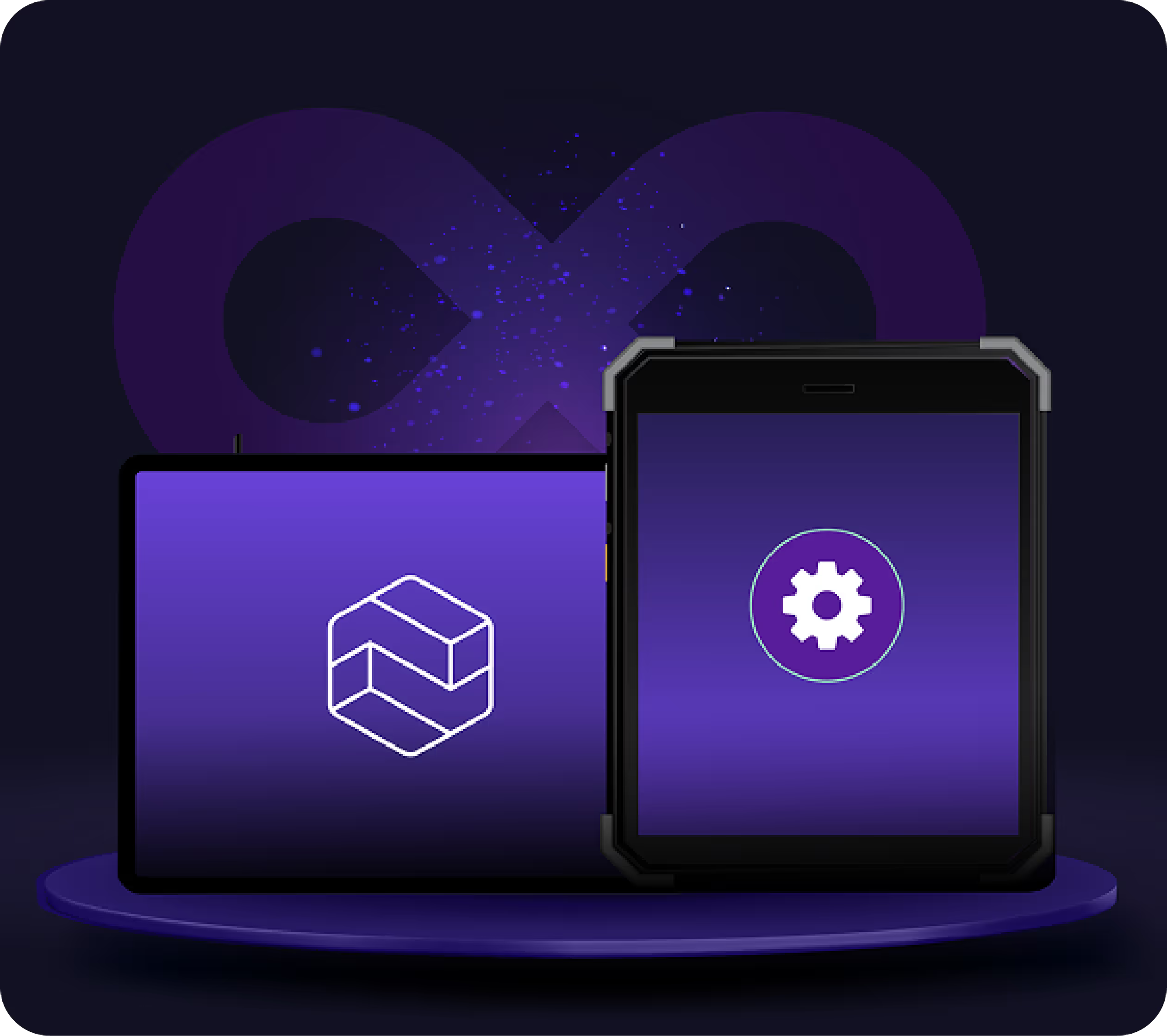Choosing the right tablets
Tablets for business use cases
Tablets excel in business use cases thanks to their high versatility. They can be used for a myriad of purposes from line busting in stores to tablets for telehealth or in warehouse management. Their compact design makes them easily portable so users can be productive wherever they are. Touchscreens and their user-friendly nature also make them intuitive to use, even for the less tech savvy. Plus, many of the best models for business are cost-effective, decreasing spend and increasing ROI.
While tablets offer a number of advantages, there are some drawbacks. Smaller devices like tablets can be more easily misplaced or stolen. They also lack full power and functionality so you may face some lagging for demanding tasks, challenges with multitasking across apps, or the need for extra peripherals.
Just here to skim? Here’s the gist:

Tablets and smartphones are both incredibly versatile devices and work well across a variety of business use cases, from mPOS to mobile ordering. While there is some overlap between them in terms of functionality, there are some notable differences. Use our cheat sheet below to determine which best suits your needs.
Tablets offer the ideal balance between functionality and portability. Their larger screens make it easier to view and use content and apps while still allowing staff to be agile.
Due to their larger screens, tablets are often preferred for applications that require precise input via a stylus or touch, such as design, healthcare, or fieldwork.
Users can effectively use tablets for emails, messaging, and video conferencing. Voice calls may be less convenient due to their larger size.
Tablets offer a cost-effective alternative to smartphones. Quality tablets are often significantly more affordable than flagship smartphones with similar features. This makes tablets a smart way to cut expenses, particularly if you don't need cellular connectivity.
Smartphones are the most portable devices out there, making them great for on-the-go communication and quick access to information. Their small screens and limited functionality could make them less suitable for certain business tasks.
Smartphones are better for applications that require mobility, augmented/virtual reality, or mobile payments.
Smartphones are perfect for efficient communication methods such as voice calls, text messages, emails, and video calls.
Small in size, potentially big in price. Smartphones can get pretty expensive thanks to their compact design and premium features like advanced cameras and facial recognition. These factors drive up production costs and result in higher price tags compared to tablets in many cases.
When selecting the right tablet for your use case, there are several essential factors to consider to ensure optimal functionality and productivity.


Customization level
The first step is deciding how much control you want. Should you buy off-the-shelf (no control), customize a commercial table (some control), or build custom (full control).?If you’re Goldilocks, you’re picking that sweet middle.

Software and application compatibility
You want this to work, right? Make sure the tablet’s processing power, RAM, and storage capacity align with the demands of your apps to prevent lag and ensure seamless performance.

Durability
Nobody likes a broken tablet — especially when that tablet is the backbone of your business. Assessing a tablet’s robustness is essential to prevent disruption and broken hearts.

Connectivity
Your connectivity method can make or break the user experience. Quick and obvious PSA: Complicated setups, spotty coverage, and weak security are no-gos.

Device lifecycle
Determine how long your devices need to be in the market. If you’re okay with a short duration, off-the-shelf tablets are a great option. If longer commits are your thing, a consumer focused tablet may not be your match.

Budget
Along with your ideal price per unit, think about what aspects of your solution are most important to you and what you’re willing to pay for them — and don’t forget to factor in routine maintenance, troubleshooting, and other lifetime costs.
MDM means different things to different people. At Esper, it means deploying with ease, updating on your schedule, and managing your devices seamlessly and intelligently. With our reliable infrastructure built on automation and ease of use, you can realize your tablets’ full potential. It’s the MDM equivalent of having a piña colada and getting caught in the rain.


Streamlined device grouping
Manage all your tablets in a single place. One tablet, groups of tablets, or all your tablets.

Update at will
Test updates on a single tablet, then stage rollouts to groups based on custom rules.

Enhanced visibility
Monitor tablet vitals like status,health, and usage at a glance. Set custom alerts for automated monitoring.


Device kitting made simple
Your IT teams can deploy dozens of tablets in minutes instead of hours. Maybe even go home early.

Avoid expensive onsite visits
View and control tablets, troubleshoot issues, or generate a debugging report. From anywhere.

Streamlined software delivery
Ensure tablets boot up with the most current OS version and settings. No matter what.


Eliminate device tampering
Lock devices down with hardened kiosk mode so users only access what you want.

Protect system integrity
Control when apps get added, updated, and removed — on the fly, at any time. As often as you need.

Keep tablets from disappearing
Track tablets in real-time and set up a virtual geofence to protect your assets.

Esper is an indispensable tool for managing our devices. It allows us to effectively manage our devices both individually and as a cohesive unit. When deciding on hardware for our fleet, our first priority is ensuring it's compatible with the Esper platform.



I’m putting tablets into 80,000 pound 18 wheelers that are out on the highway. One of my biggest fears is that a driver is going to be watching videos or playing games while driving in my equipment. I needed a way to lock my device down so only company approved applications were being used. Esper gives me the control to do that.



Remote install for hotel in-room tablets
Our in-room tablets give guests board control over their stay. They can order dining, make service requests, adjust room controls, and much more with a few taps of a screen. Esper enables the INTELITY platform to globally deploy and manage devices across all of a customer’s properties regardless of size. Through Esper’s platform we can do remote installation and reduce the reliance on IT support at each hotel.


A mobile device management (MDM) system for tablets allows you to remotely access, update, and control the tablet and the content on it.
MDM for tablets is helpful in industries that utilize tablets for employee- and customer-facing activities like digital check-in or ticketing, kiosks, and more.
MDM makes managing corporate-owned tablets easier across the entire organization. You can use MDM to update applications, content, and in some cases even the operating system.
Many industries can take advantage of using tablets, including retail, hospitality, medical, transportation, and more.